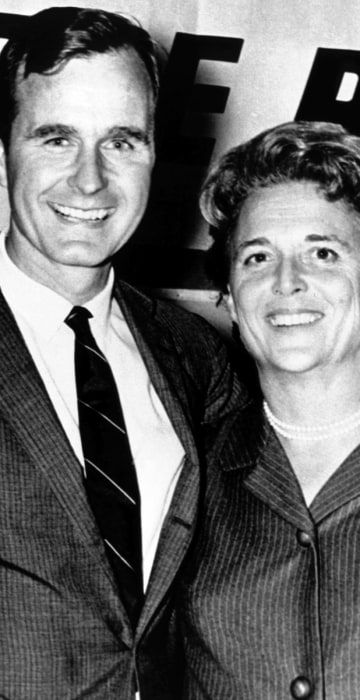
Obituaries
George H.W. Bush: A look back at the former president's life
One of the most experienced public servants in United States history, Bush was elected 41st president in 1989.
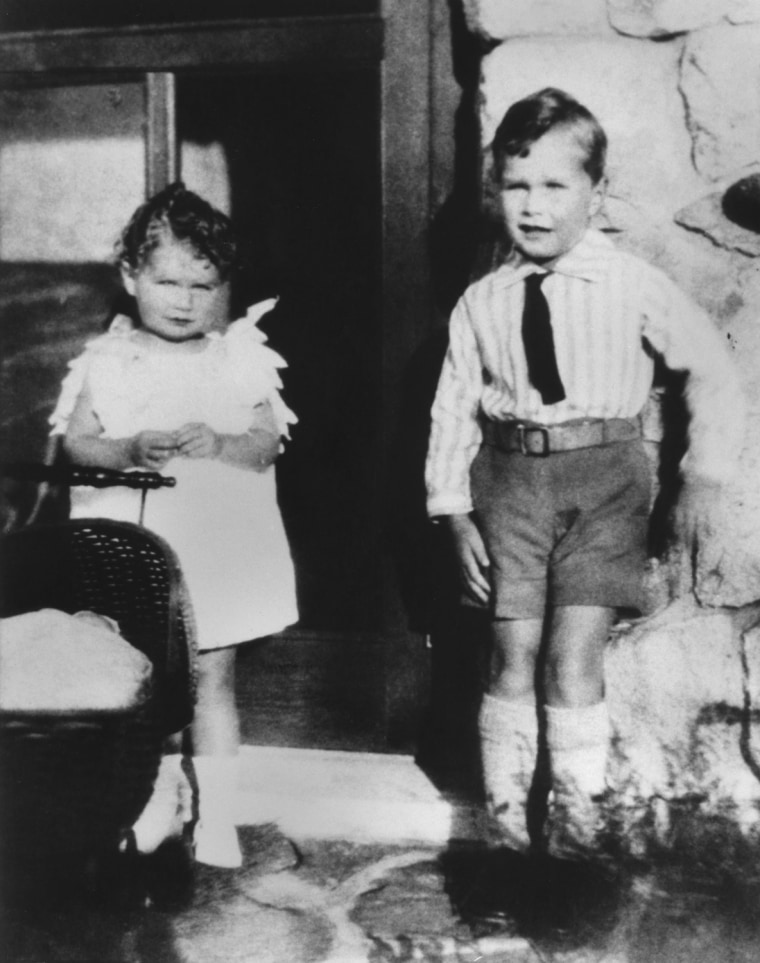
George Herbert Walker Bush, the 41st president of the United States, was born June 12, 1924, in Milton, Massachusetts. Soon after, the family moved to Greenwich, Connecticut. His father, Prescott Bush, was a railroad and steel executive who went on to become a U.S. senator from Connecticut. The future president is seen here with his sister Mercy in 1929.
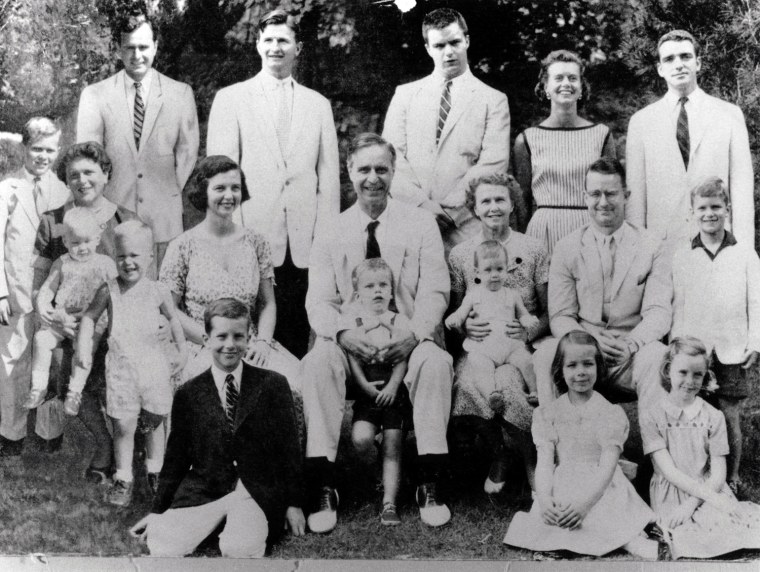
Bush was the second of five children and part of an influential and affluent family. He is seen here, top left, with his father, Prescott, seated center, and other family members. Bush went to the prestigious Phillips Academy boarding school in Andover, Massachusetts, before joining the Navy as an aviator soon after the attack on Pearl Harbor.
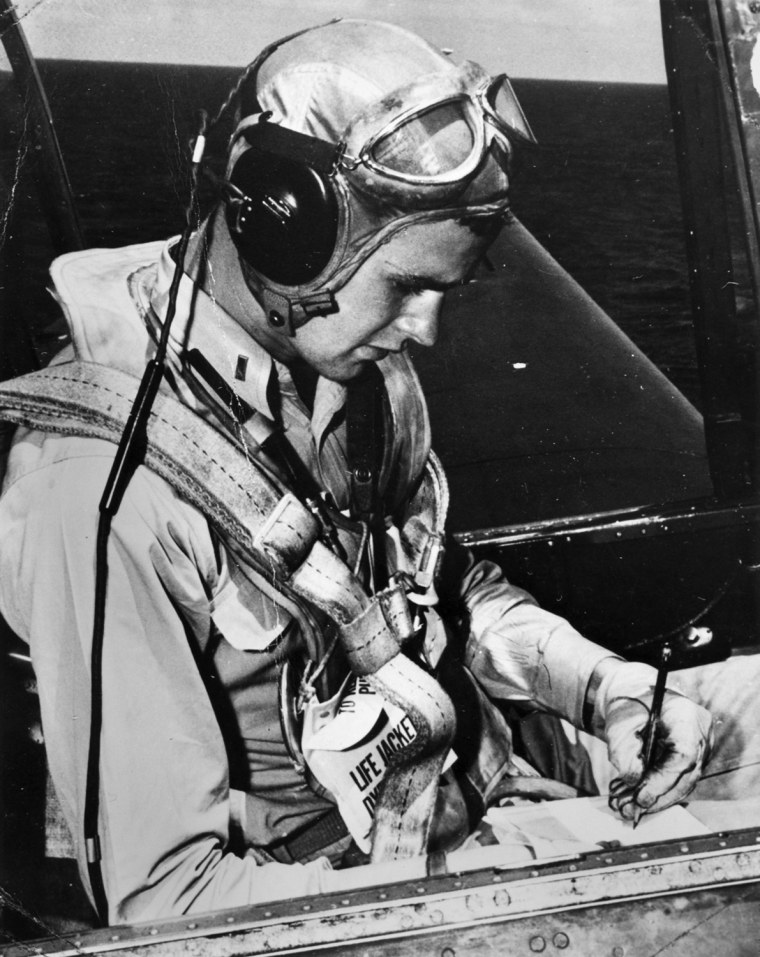
Joining the Navy just out of high school, Bush became the service's youngest aviator at age 19, seeing considerable action in the Pacific. In 1944, the aircraft he was piloting was hit by flak and he was forced to bail into the ocean, where he waited for four hours in a rubber raft until being rescued. Bush flew 58 missions and was awarded the Distinguished Flying Cross and several other medals. He was honorably discharged at the end of the war, having married Barbara Pierce in January 1945.
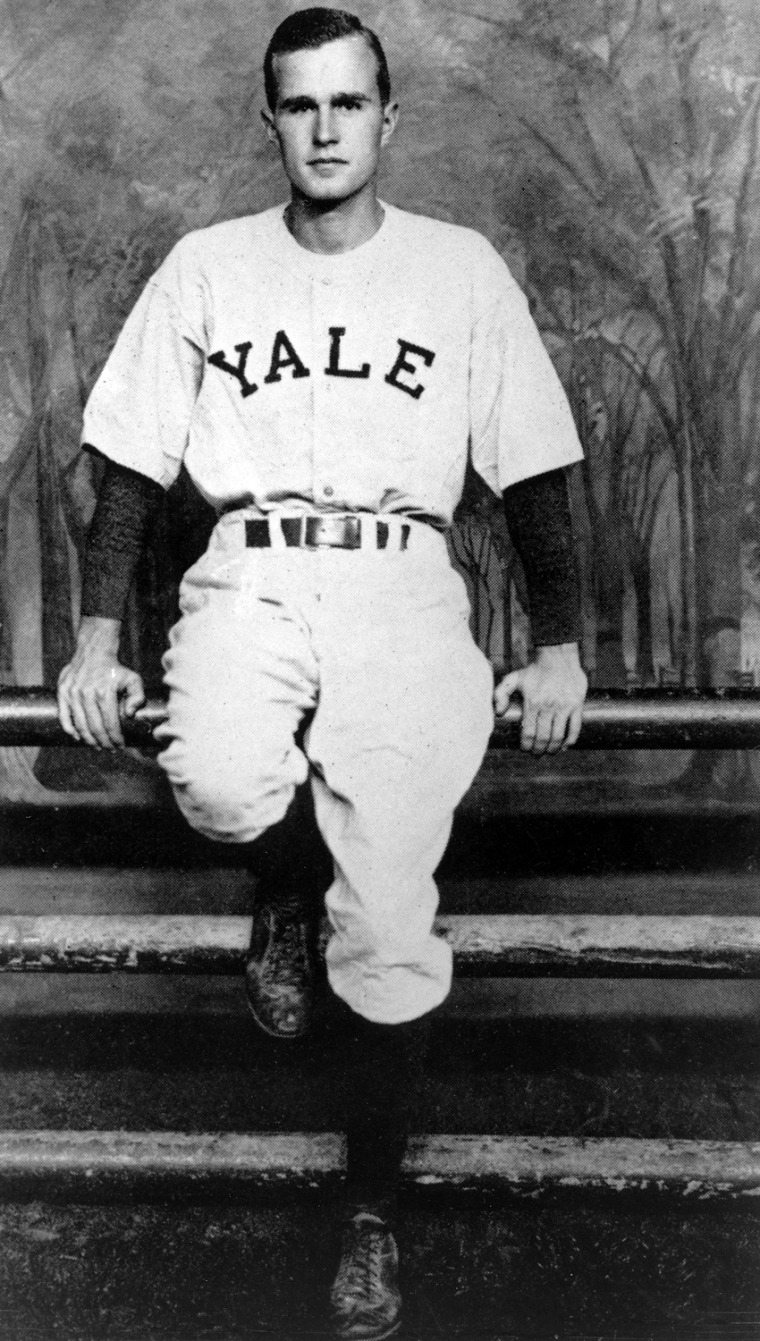
Like his father and several other forebears, Bush attended Yale University. Because of his war service, he was enrolled in an accelerated program that enabled him to graduate in 1948. At Yale he was active in sports, playing first base for the college's baseball team and taking part in the first two College World Series. Like his father and his eldest son, George Walker Bush, he became a member of the secretive Skull and Bones Society. He graduated with a degree in economics.

After Yale, Bush moved to Midland, Texas, where his father had connections in the oil industry. After a couple of years working for someone else, Bush started his own drilling and exploration company, which was soon lucrative and made him a rich man in his own right. After about a decade, though, his ambitions turned to politics, and after an unsuccessful run for the U.S. Senate in 1964, he won a congressional seat in 1966. He is seen with his wife, Barbara, during one of his campaigns during the 1960s.
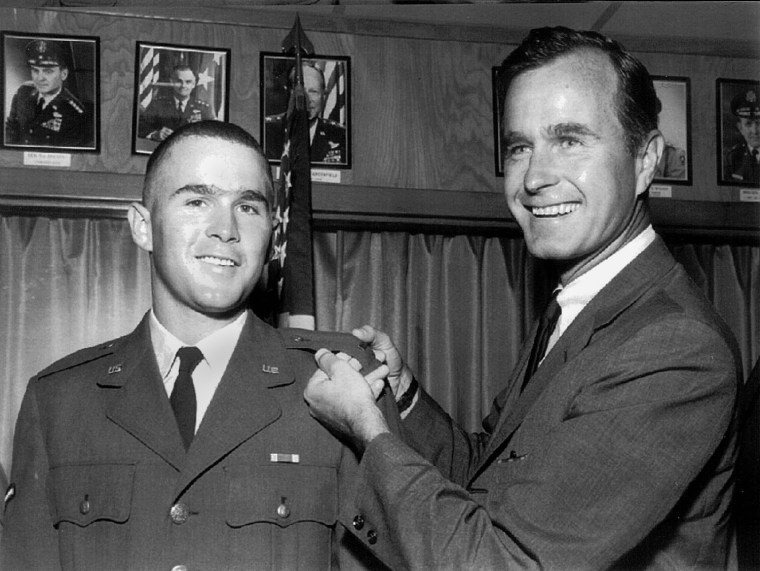
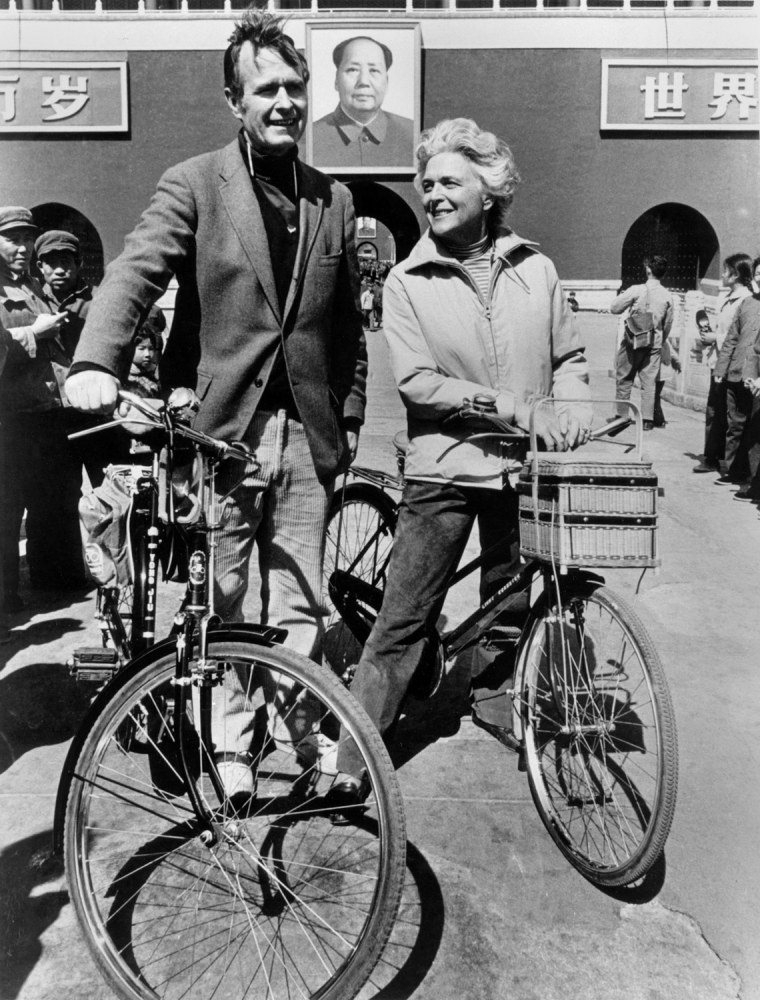
In 1970, President Richard Nixon persuaded Bush to run for the U.S. Senate, a race he lost. Nixon then appointed him U.S. ambassador to the United Nations, a job he held for two years. Following Nixon's resignation, President Gerald Ford appointed Bush a special envoy to China, where he is seen with his wife, Barbara, in 1974.
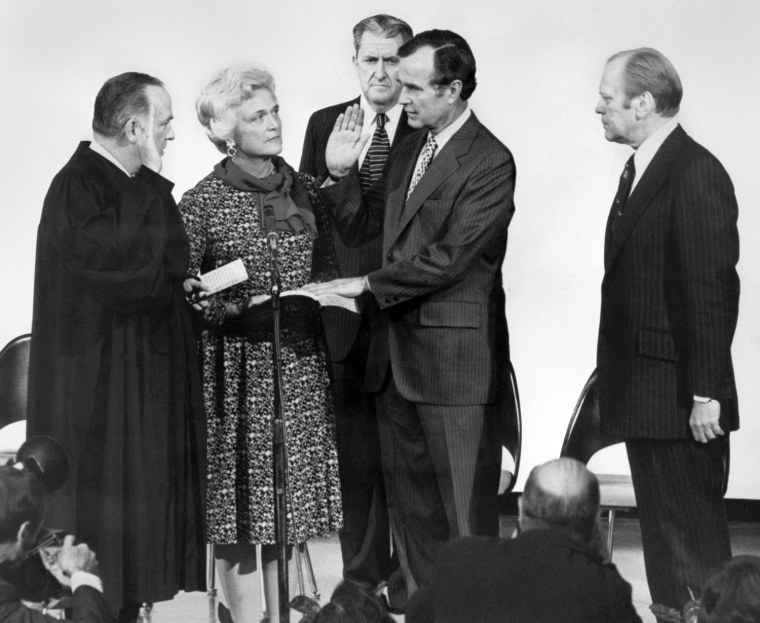
In January 1976, Ford appointed Bush as director of the Central Intelligence Agency. Both are seen here at the swearing-in ceremony. The job was to last less than a year because Ford was defeated by Jimmy Carter in the November general election and Carter declined to keep him in the position. Bush then returned to private life in Texas.
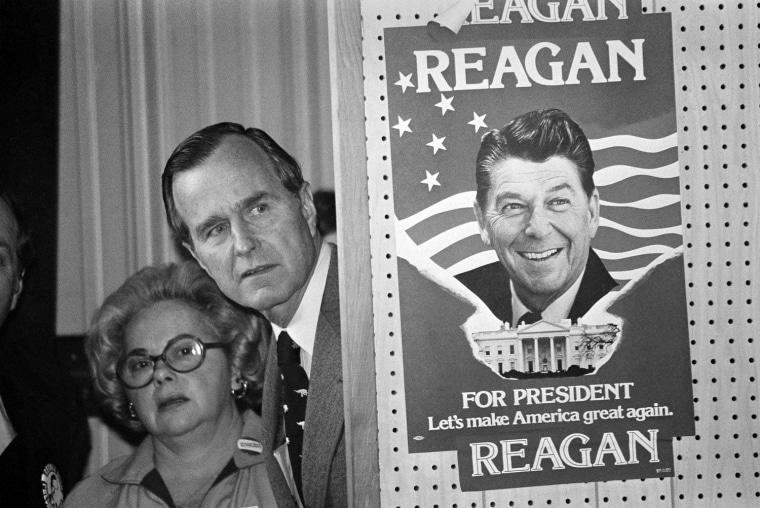
In the late 1970s, Bush decided that he wanted to be president and began traveling the country in an attempt to drum up support. He entered the Republican primaries in early 1980 and had some early success before being defeated by Ronald Reagan. Here, he peeks around a partition displaying a poster of Reagan during an event in Columbia, South Carolina. At the convention later that year, Reagan selected Bush to be his running mate, placing him on the winning Republican presidential ticket.
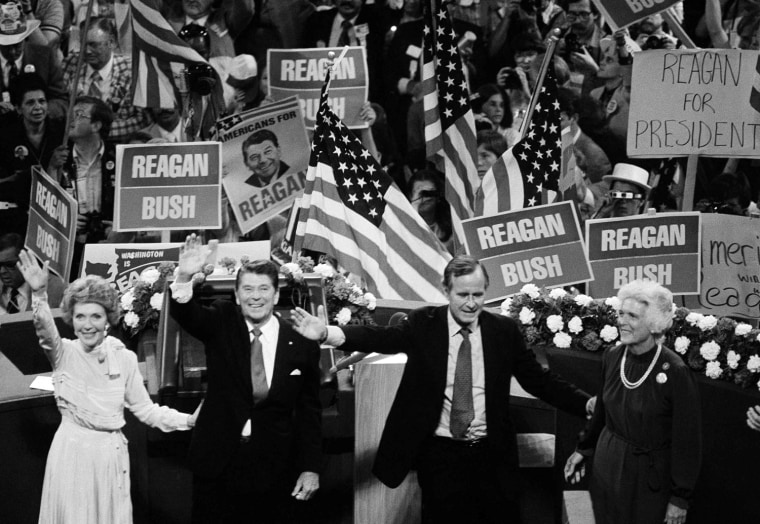
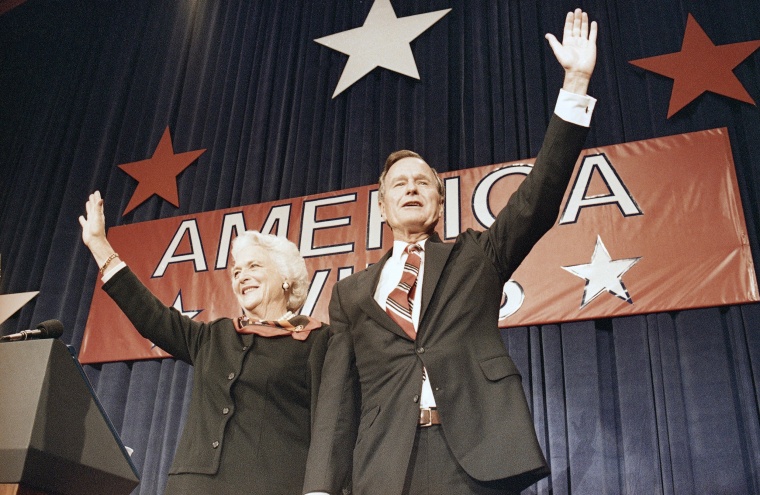
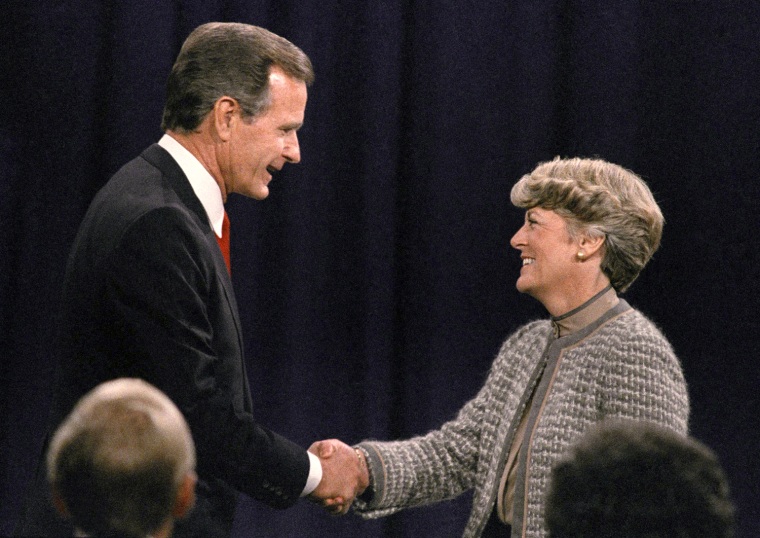
In 1984, Reagan and Bush were re-elected for a second term, beating Walter Mondale and Geraldine Ferraro. Here, Bush greets Ferraro, the first female vice presidential candidate, before the beginning of their October 1984 debate. The event was to prove contentious, with Ferraro accusing Bush of having a "patronizing attitude" and fiercely defending her abortion rights view.

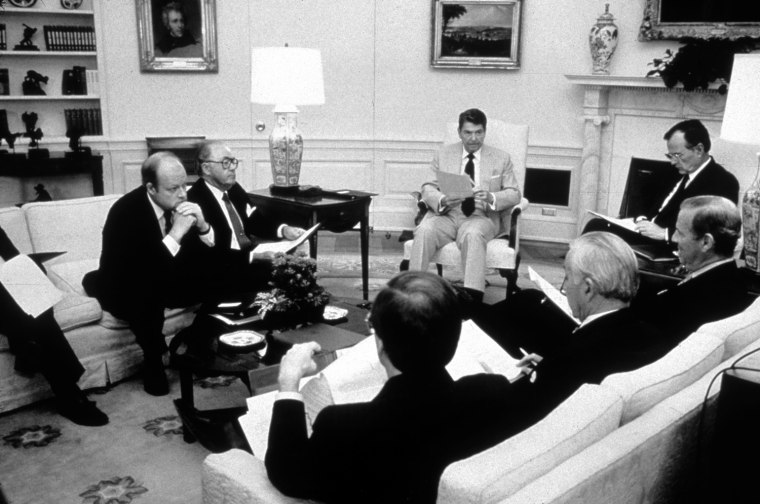

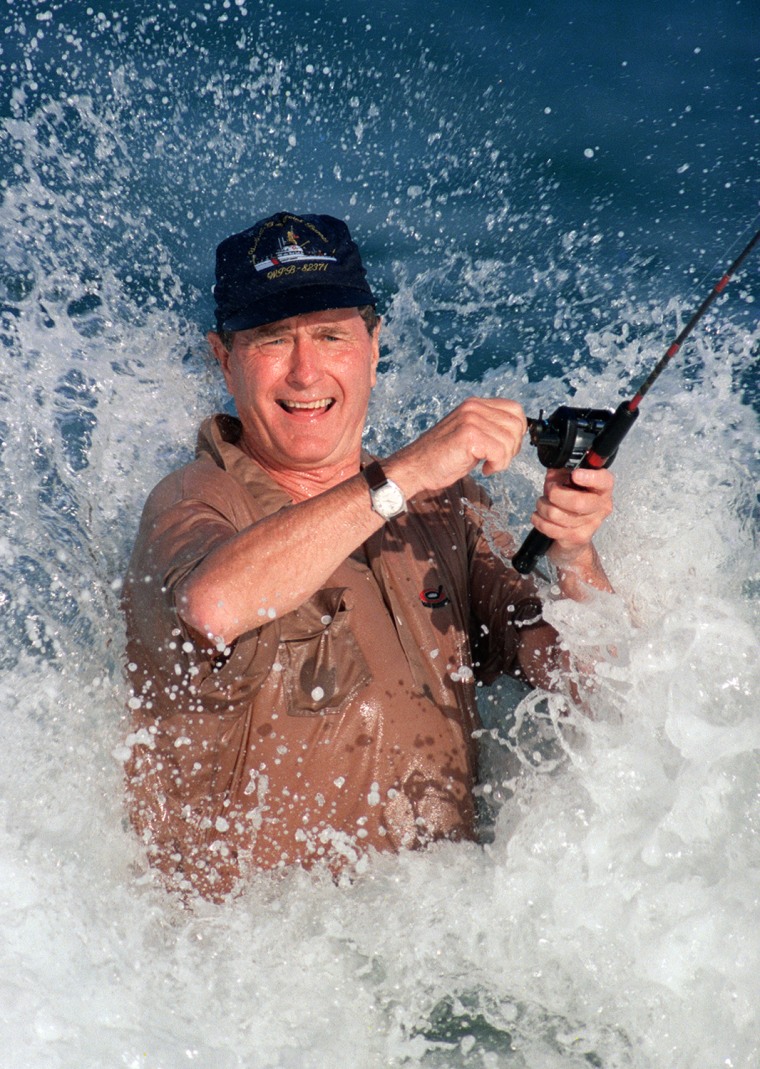
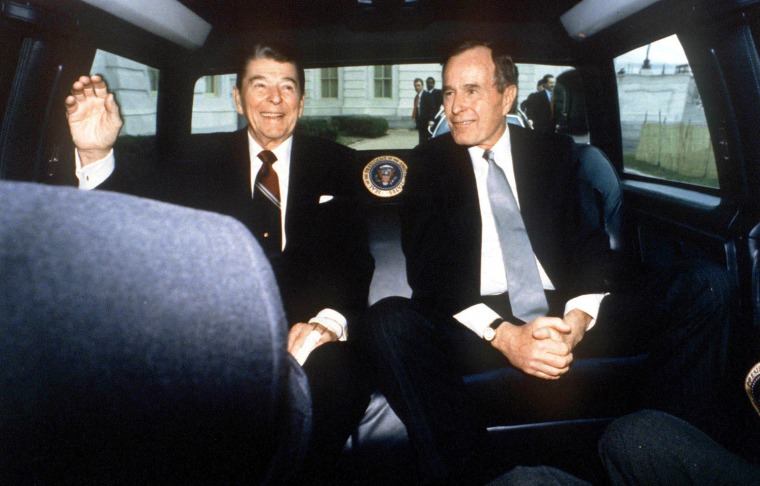


One of the major events of Bush's presidency was the fall of the Berlin Wall in November 1989. Here, thousands of young East Berliners gather near the Brandenburg Gate after Günter Schabowski, the East Berlin Communist Party boss, declared that East Germans were free to leave the country.
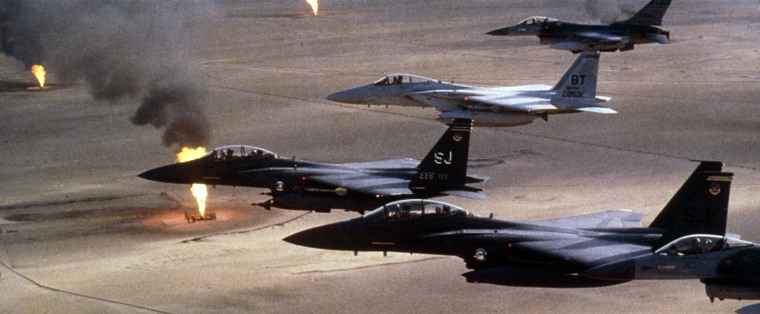
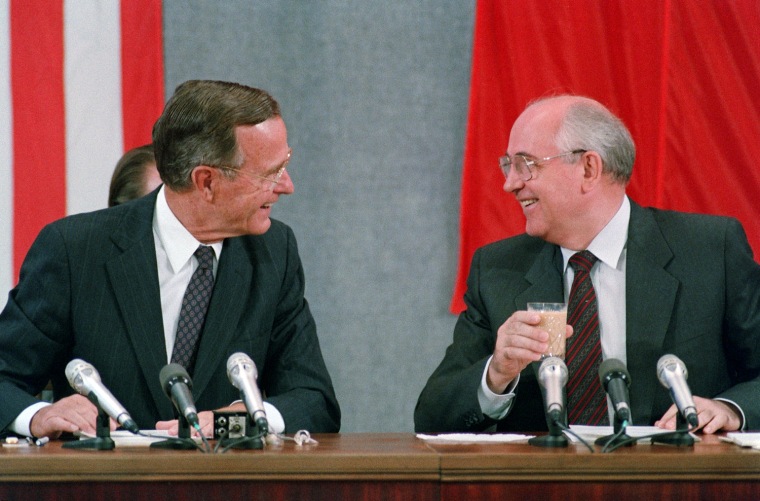
President Bush and Soviet leader Mikhail Gorbachev during a July 1991 news conference in Moscow that concluded a two-day summit on nuclear disarmament. A month later, Gorbachev was under house arrest after a coup. Though he was restored to power, the Soviet Union crumbled and Gorbachev left office in December.
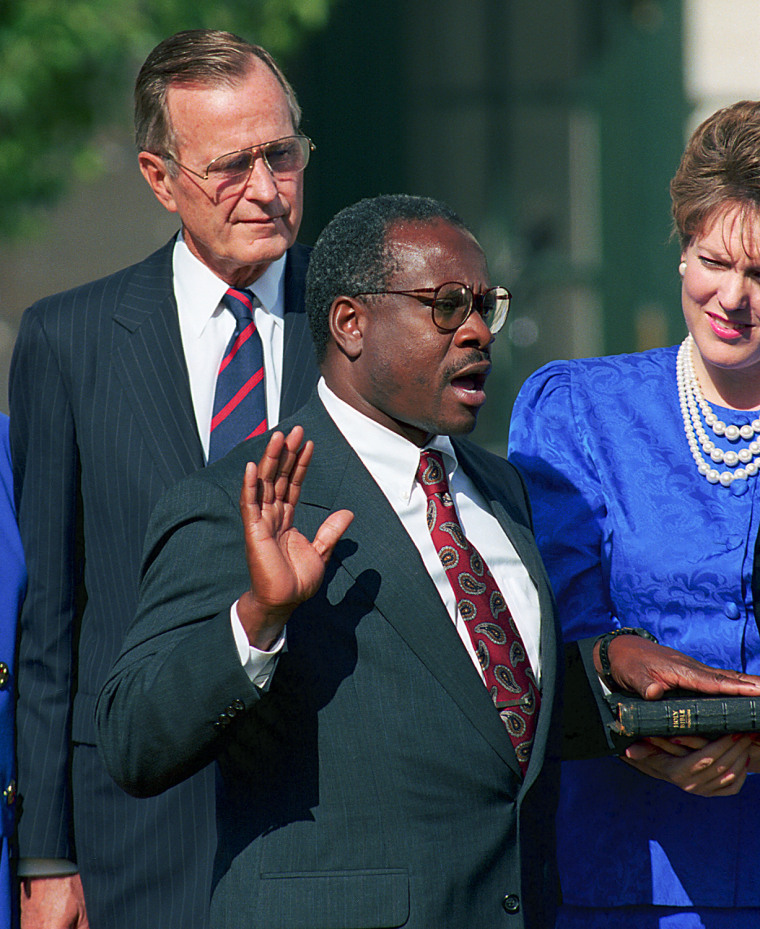
Clarence Thomas takes the oath to become a justice of the U.S. Supreme Court during a ceremony at the White House in October 1991. Holding the Bible is Clarence's wife, Virginia. Thomas' confirmation came after contentious Senate hearings that included allegations of sexual harassment.
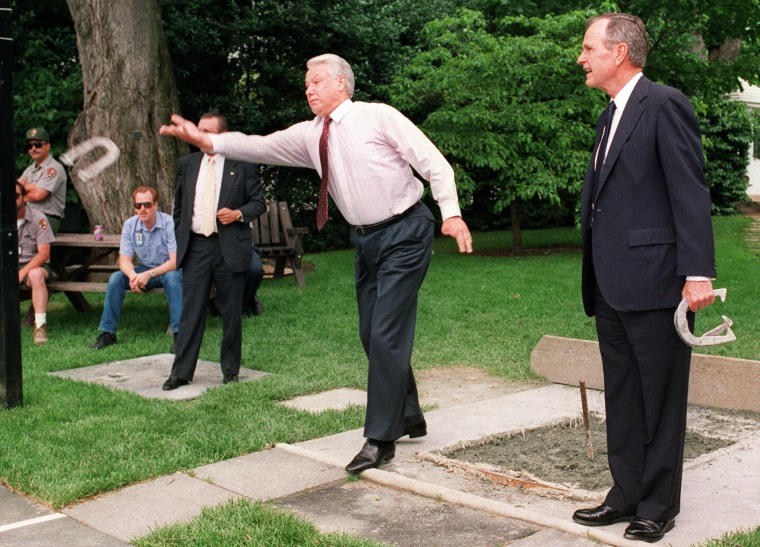
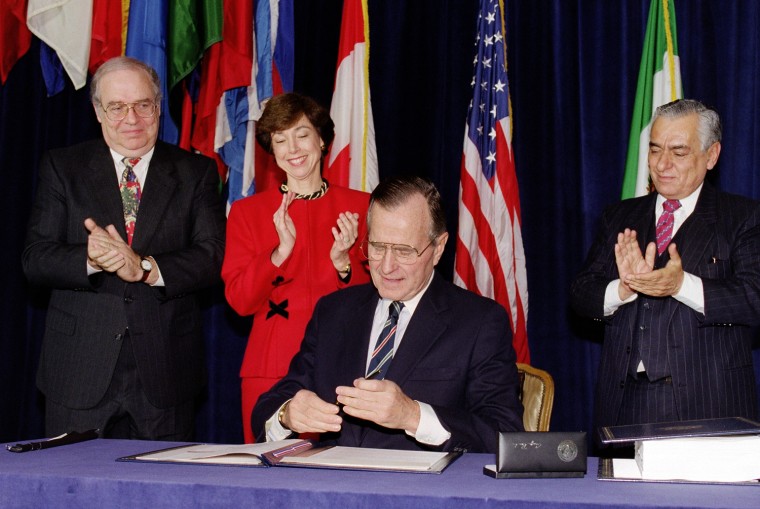
Bush signing the North American Free Trade Agreement at the Organization of American States headquarters in Washington in December 1992. Mexican Ambassador Gustavo Petricioli, left, U.S. Trade Representative Carla Hills and Canadian Ambassador Derek Burney applaud.
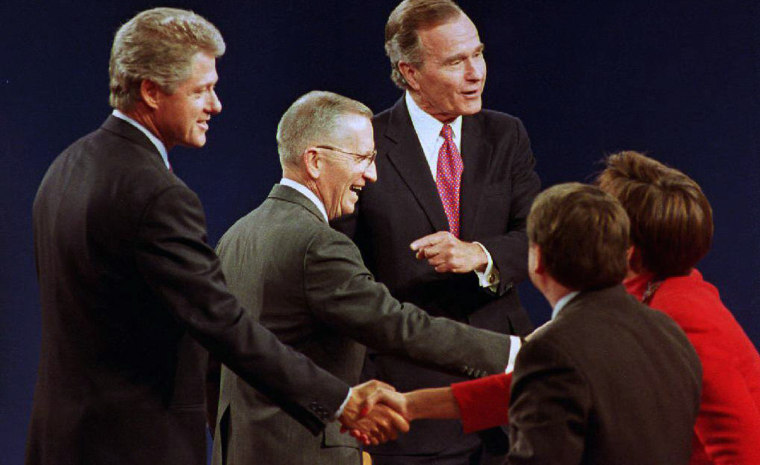
Presidential candidates Bill Clinton, Ross Perot and George Bush shake hands with panelists after the conclusion of their final presidential debate in October 1992. Perot's strong showing in the election, as well as fallout from Bush's broken "Read my lips — no new taxes" pledge, were keys to Clinton's win.
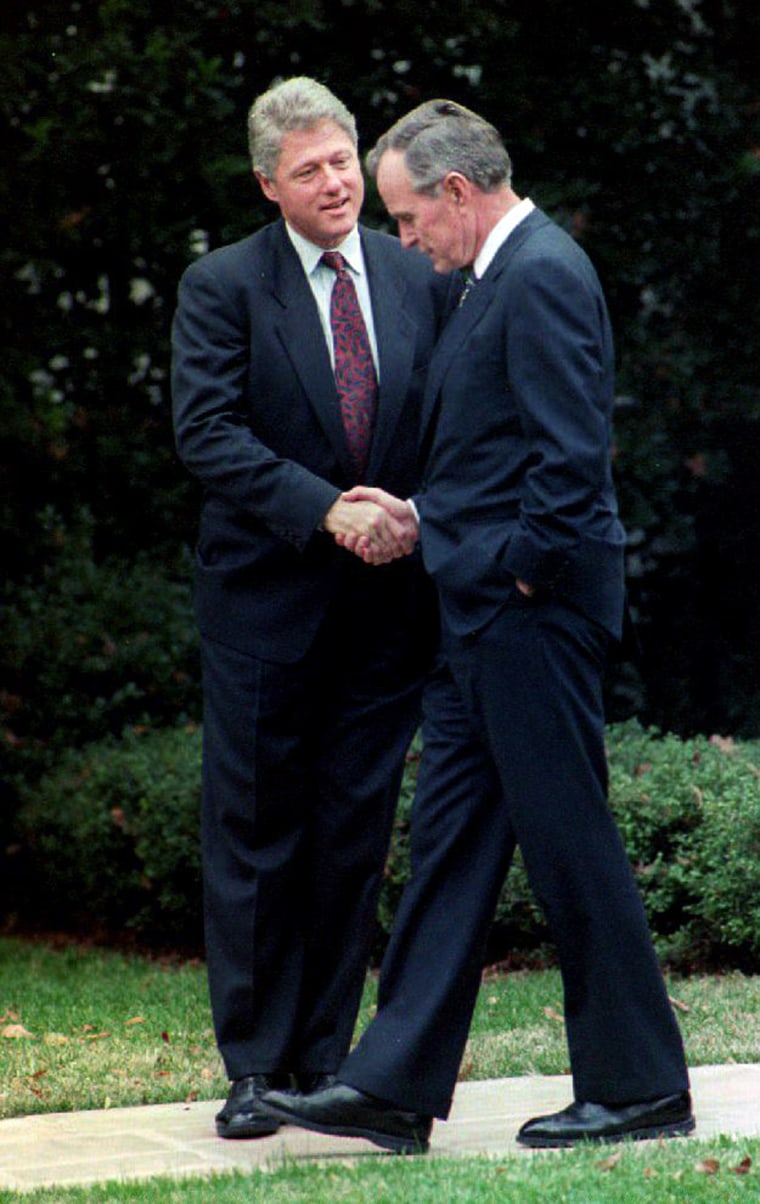
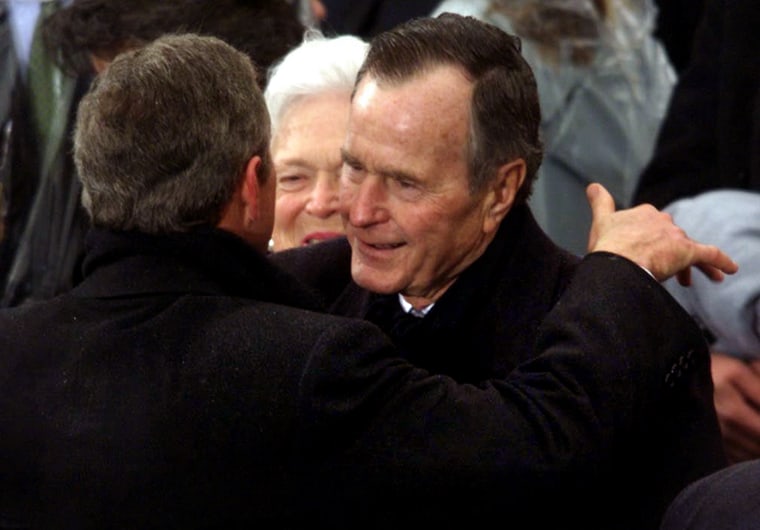

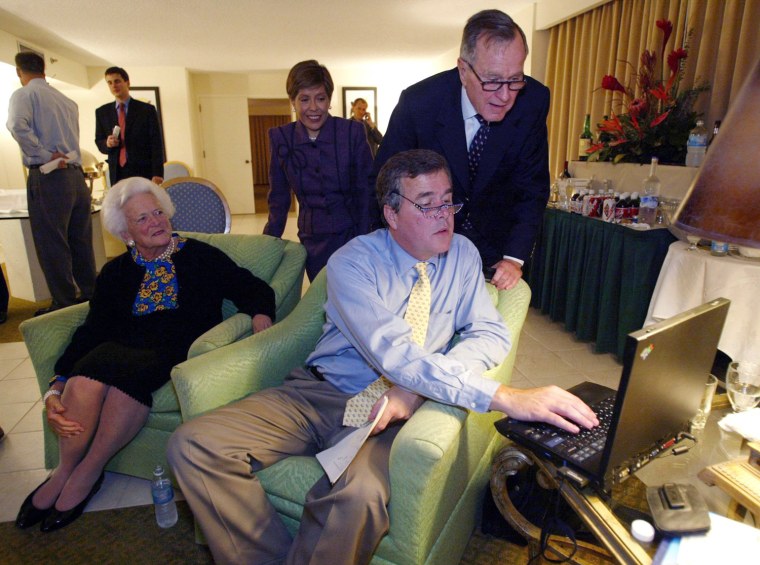

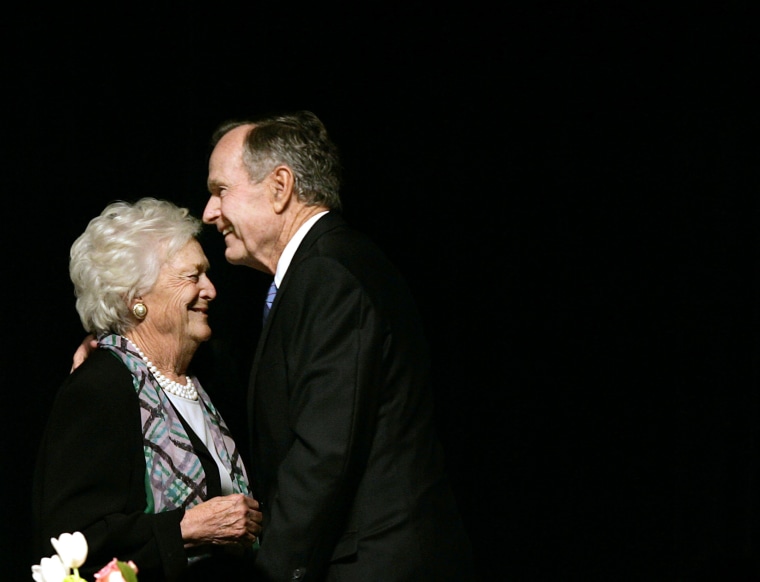
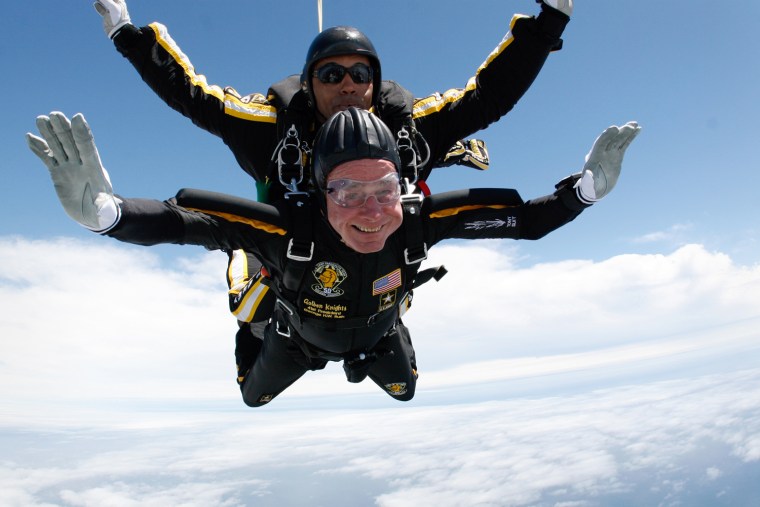
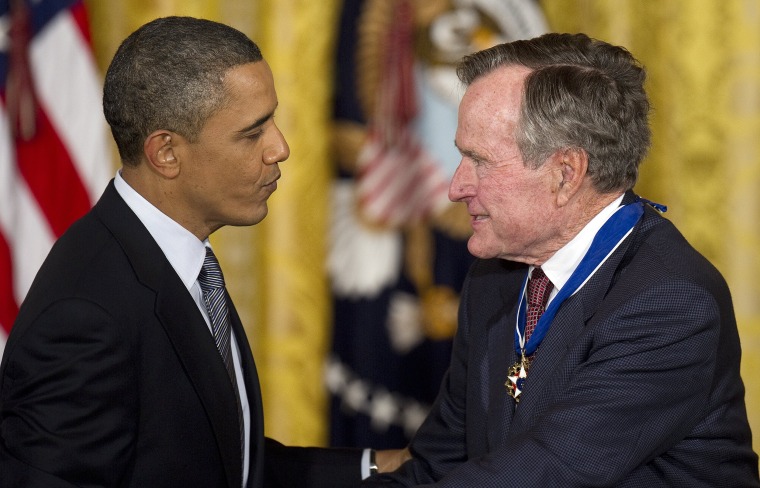

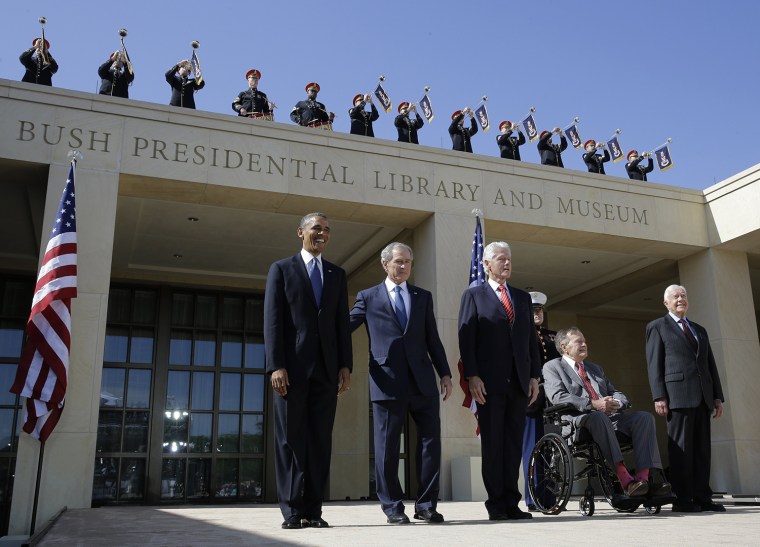
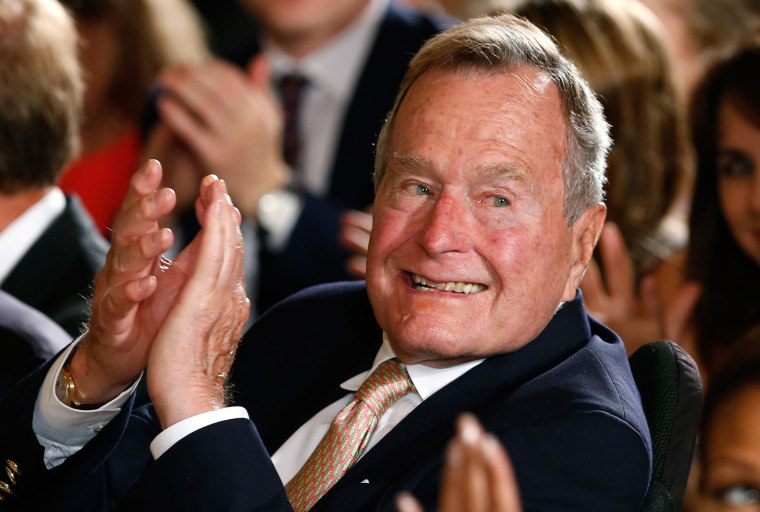

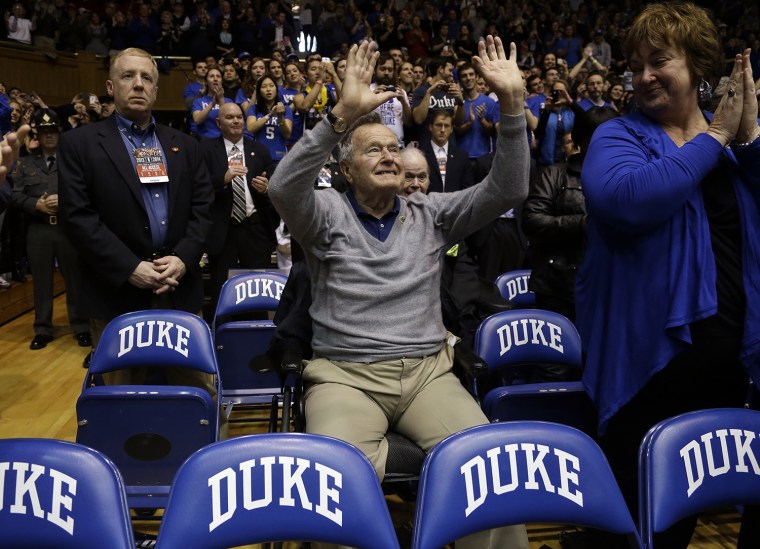

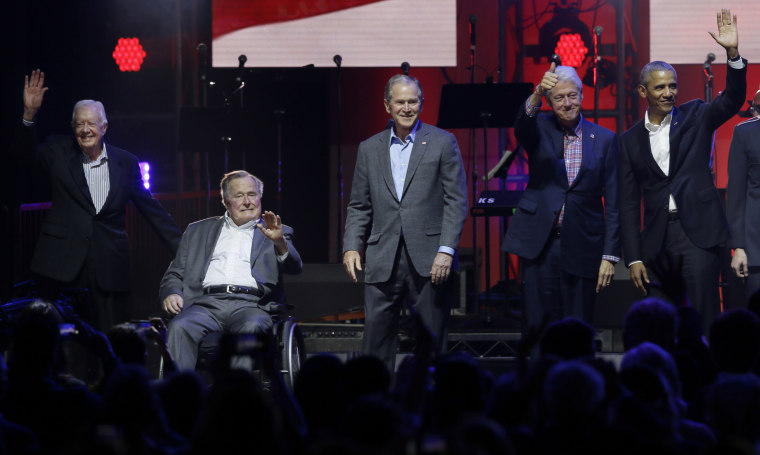
All five living former presidents gather on stage at the opening of a hurricane relief concert in College Station, Texas, on Oct. 21, 2017.
From left are Jimmy Carter, George H.W. Bush, George W. Bush, Bill Clinton and Barack Obama. They joined to support a fund-raising effort for victims of Hurricanes Harvey, Irma and Maria.
